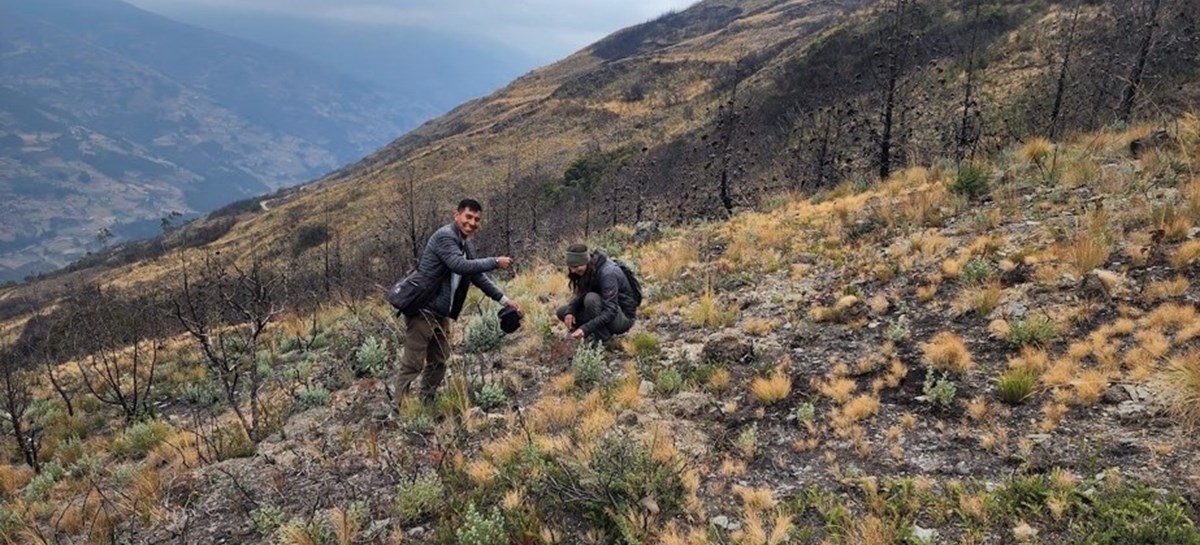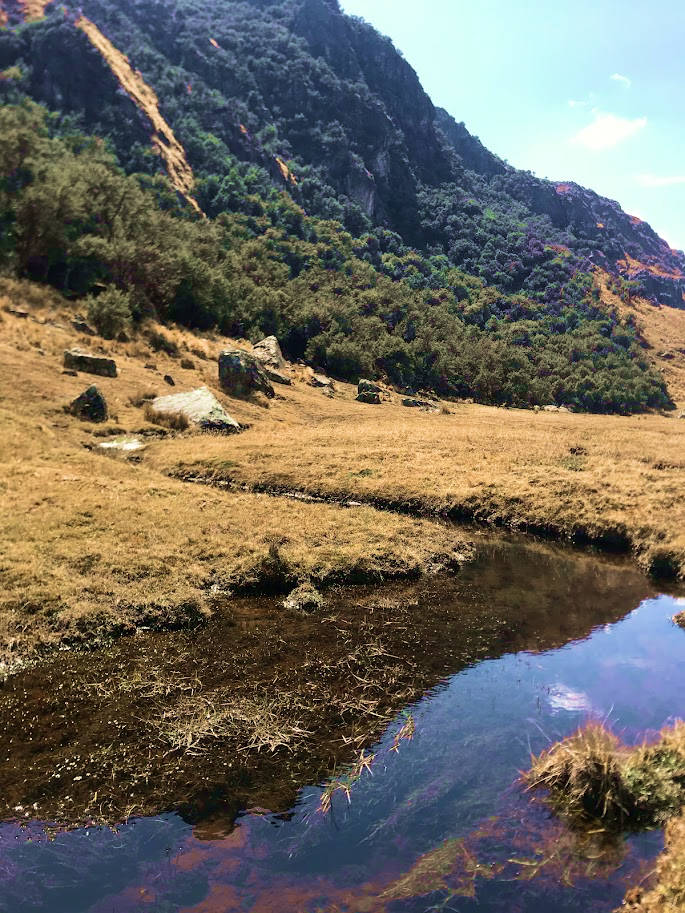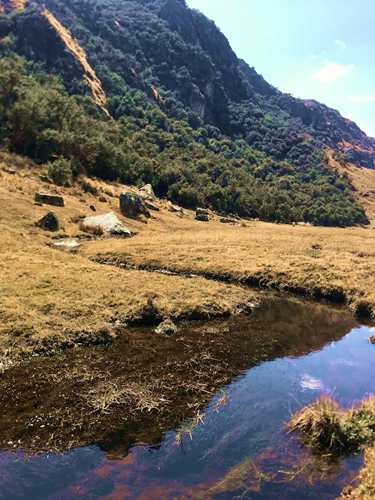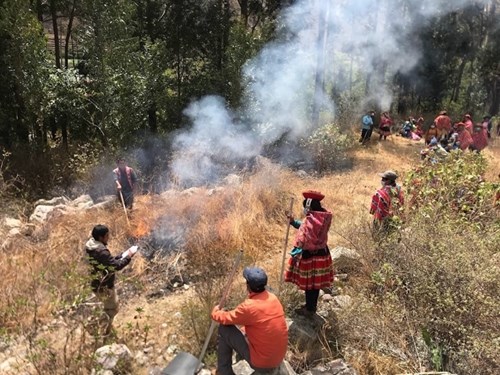
How to restore the highest forests on Earth
Rhodes Scholar Tina Christmann (Germany & Worcester 2018) embarked on a journey across the Peruvian Andes where fires which have eroded landscapes, threatened ecosystems and damaged people's way of life.
There is hope for the Andean forests. In the last decade several forest restoration projects have emerged across the Peruvian Andes.
‘Planting and harvesting water’ [Siembra y cosecha de agua in Spanish]. This saying portrays how planting trees can be used as a method to increase water resources and explains why Peruvian mountain communities are so keen to restore the mountain forests around them.
Peru – a highly mountainous and heterogenous country with more than 60 per cent of its population working in subsistence agriculture – has been witnessing the effects of climate change and deforestation for decades. Uncontrolled fires have destroyed many of the native Andean ecosystems. Deforestation has led to soil degradation and erosion, large scale flooding and landslides. This has compromised the agricultural way of life and beyond that many native plant and animal species are near extinction.
But there is hope - to bring back the Andean forests. In the last decade several forest restoration projects have emerged across the Peruvian Andes.


A mystical Andean forest at 4,500m above sea level. The trees are trapping the clouds and storing water in the soil which they solely release to the lower areas. Here you can see how a little wetland has formed below the forest.
After two years of ‘COVID-DPhil’ – biting myself through satellite data and literature reviews - I took a last-minute opportunity to fly out to Peru in August and visit the breath-taking ecosystems that I have been studying and the people who live amongst them. My goal was to explore through interviews how forest restoration is being done in the Peruvian Andes and what we can learn for successful restoration in developing countries around the globe.
Let me take you on a journey to the highest altitude forests on Earth, the cultural vibrancy of the Andean mountain communities, and the many lessons learnt to help restore these peculiar ecosystems and all the essential services they provide to humanity and biodiversity.
Our fieldwork starts in the mountain community of Kiuñalla, (3,000m above sea level) a scenic farming community West of Cusco where an NGO has helped restore and protect forests. Here we begin our interviews, talking to people who have participated in forest restoration and are keen to share their wisdom. The village is rugged with dirt tracks and adobe houses. We find a lovely family to host and feed us the maize and potato-based diet. We must adjust our schedule to the Andean way of life – early mornings and early evenings centred around farming duties. Hence we seek our interviewees at sunrise and after sunset, not to inconvenience them. We also learn to connect with the community in their traditional ways, and grasp opportunities as they arise. We help with the communal work of digging a basement and get to share a glass of Chicha, a fermented maize beer, with fellow workers.
Our interviews go well, and the insights are astounding – people are noticing a decrease in water availability and want to conserve their forests to improve their agriculture. But the forest is also valued to for many of the medicinal species and the wild animals such as the condor and the Andean spectacled bear.
A few weeks later we travel to the community of Challabamba – conveniently also the home region of my fabulous research assistant Isaias. Here, we see the forest degradation with our very own eyes. The forests are fragmented, many have been burnt by wildfires and the few trees we see around are mainly exotic Gum Trees. But by involving community members, especially women in the greenhouse work and offering paid restoration work, a local NGO is on a mission to restore hundreds of hectares of burnt down forest. We learn how forest restoration must provide tangible benefits to communities and that providing alternative livelihoods is on top of the priority list.

A fire-fighting workshop with community leaders from all over the cordillera de Vilcanota range.
In the cordillera de Vilcanota mountain range we visit a project that is on a totally different scale. The NGO ECOAN has planted 6 million trees in the last 20 years involving 20 communities. We witness with our own eyes how important it is to not only teach communities how to best plant trees for their benefits, but also how to protect the forests that are still standing. We join a fire prevention workshop where ECOAN teaches the techniques to prevent and combat wildfires. A great opportunity to meet many of the community leaders and get some interview dates in!
After visiting many NGO-led projects we venture into the ‘governmental restoration scene’ visiting sites in protected areas. In Huascarán – a National Park renowned for the highest density of icy glaciers 5000m or more above sea level – we sneak a hike to the dreamy mountain lagoons into our busy schedule to celebrate my assistant Mayte’s birthday. We interview park rangers who have been piloting restoration techniques since the 1980s but which have never been published or shared due to a lack of funding. From that moment we’re even more on a mission: to make much of this invaluable knowledge which is so far hidden in dusty reports available to practitioners and scientists.
After a week of wrapping up our work in Lima, presenting some findings to the government forestry authorities, and a bit of surfing on the pacific waves, I headed back to England. With 75 interviews in the banks and new perspectives on how to implement forest restoration in a socially challenging and mountainous area I am now writing a policy brief, several NGO reports and a scientific paper to share the Peruvian restoration experiences on an international stage and ensure that future projects can learn from their predecessors and benefit communities and ecosystems.
Peru has brought me not only 75 interviews and a ton of data to analyse, but also friendships, visual memories of the beauty but also the destruction of the Andes and taught me how to use forest restoration as a win-win strategy. Above all it has deepened my understanding of why and how we do restoration in the first place – for the people and with the people!
Tina Christmann is pursuing a doctorate in Geography and Environment. Her socio-ecological fieldwork to 10 forest restoration sites in Peru was kindly funded by the Sir Peter Elworthy grant, Worcester college and the School of Geography in Oxford.
See more of her fieldwork on Instagram:
https://www.instagram.com/p/Ci1OxGcDGFJ/
https://www.instagram.com/p/CjO6KLqpWSu/
https://www.instagram.com/p/CjYwjNXJWar/